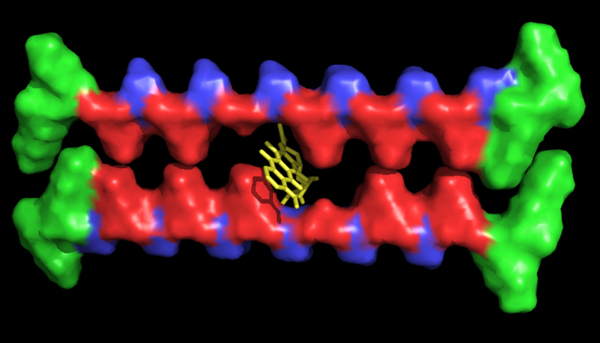Medical device and MedTech insights, news, tips and more
New Hydrogel Can Carry Hard-to-Deliver Drugs
June 22, 2016

The new hydrogel was created in the lab of Rice University bioengineer Jeffrey Hartgerink, where bioengineers create custom peptides that can promote healing and tissue growth. This hydrogel aims to take advantage of the gaps in peptide nanofibers, enabling it to hide drugs that have hydrophobic properties.
 I-Che Li, graduate student at Rice and lead author on the work, says that this hydrogel could be a novel solution for hydrophobic drugs—as they tend to clump in the bloodstream and make it difficult to deliver to desired sites in the body.
I-Che Li, graduate student at Rice and lead author on the work, says that this hydrogel could be a novel solution for hydrophobic drugs—as they tend to clump in the bloodstream and make it difficult to deliver to desired sites in the body.
“Expanding the delivery of hydrophobic drugs is challenging because of their poor water solubility,” Li said. “It seems for our peptide fibers, which has a hydrophilic (water-attracting) exterior, and hydrophobic interior—the interior is the only region that can be used to store the drugs.”
Li says their new peptide nanofibers are like a hot dog bun, and the hydrophobic drugs are the hot dog inside the bun. They were able to carve a cavity in the fiber interior (the bun) for encapsulation of the drug, creating a water-avoiding core where the drugs (the hot dog) can be stabilized. This essentially creates a binding pocket for the drugs inside a hydrogel, that can then be delivered to any desired area in the body for release.
To create the custom fibers, the group first developed custom peptides with alternating hydrophobic and hydrophilic amino acids, leaving intentional gaps. Once the hydrophobic drugs mixed with the peptides, they were attracted to the gaps and immediately trapped when the peptides self-assembled. Li says that these missing tooth hydrogels can even be combined with protein drugs to deliver hydrophobic and hydrophilic drugs in the same system. Li says their new peptide nanofibers are like a hot dog bun, and the hydrophobic drugs are the hot dog inside the bun. They were able to carve a cavity in the fiber interior (the bun) for encapsulation of the drug, creating a water-avoiding core where the drugs (the hot dog) can be stabilized. This essentially creates a binding pocket for the drugs inside ahydrogel, that can then be delivered to any desired area in the body for release.
“We believe that we can also combine medicine-loaded missing tooth hydrogels with protein drugs so that the hydrogelcan deliver both water-attracting proteins and water-avoiding drugs simultaneously,” he said. “The benefit of delivering more drugs is to trigger more biological actions at the same time. For example, tissue regeneration requires complicated biological signaling processes at each stage. By controlling the release of various drugs and growth factors, triggering the biological signaling process at proper timing will become possible.”
Read More – Source: New Custom Hydrogels Carry Hard-to-Deliver Drugs | Qmed
Kristopher Sturgis is a contributor to Qmed.
